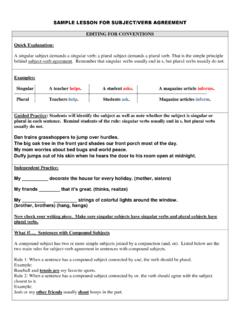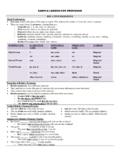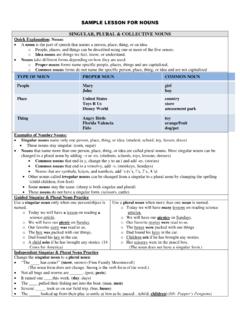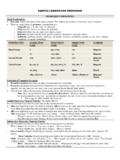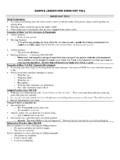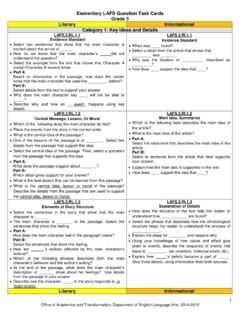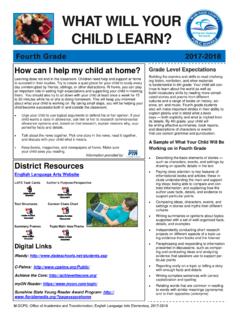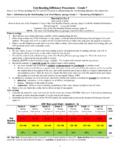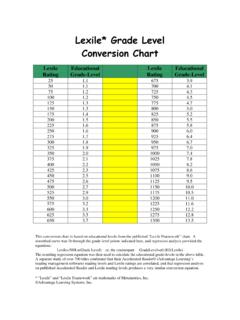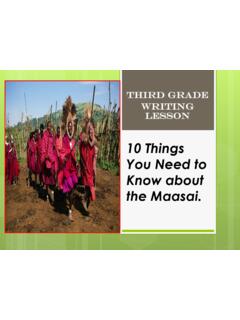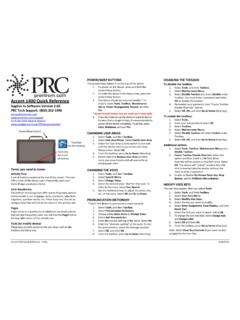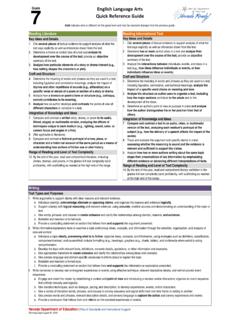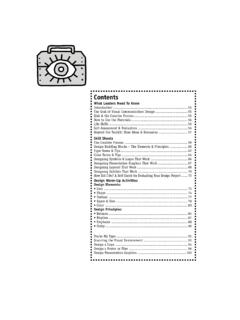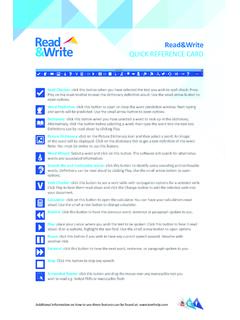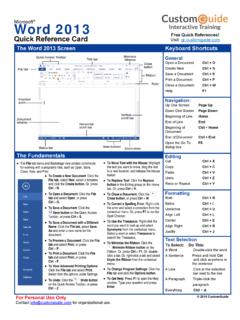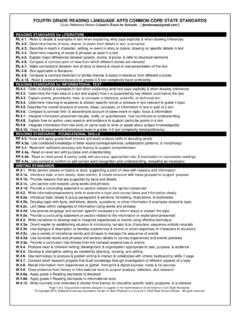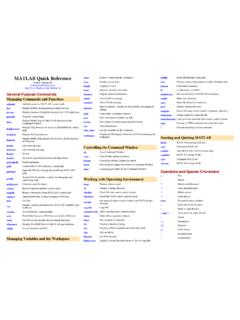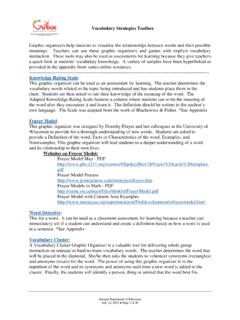Transcription of LAFS QUICK REFERENCE GUIDE - Language arts
1
2 Language ARTS FLORIDA STANDARDS ( lafs ) K12: QUICK REFERENCE GUIDE LA Strand: READING WRITING SPEAKING & LISTENING Language Cluster 1: Key Ideas and Details Cluster 1: Text Types and Purposes Cluster 1: Comprehension and Collaboration Cluster 1: Conventions of Standard English Standard 1 1. Read closely to determine what the text says explicitly and to make logical inferences from it; cite specific textual evidence when writing or speaking to support conclusions drawn from the text. 1. Write arguments to support claims in an analysis of substantive topics or texts, using valid reasoning and relevant and sufficient evidence.
3 1 .Prepare for and participate effectively in a range of conversations and collaborations with diverse partners, building on others ideas and expressing their own clearly and persuasively. 1. Demonstrate command of the conventions of standard English grammar and usage when writing or speaking. Standard 2 2. Determine central ideas or themes of a text and analyze their development; summarize the key supporting details and ideas. 2. Write informative or explanatory texts to examine and convey complex ideas and information clearly and accurately through the effective selection, organization, and analysis of content. 2. Integrate and evaluate information presented in diverse media and formats, including visually, quantitatively, and orally.
4 2. Demonstrate command of the conventions of standard English capitalization, punctuation, and spelling when writing. Cluster 2: Knowledge of Language Standard 3 3. Analyze how and why individuals, events, and ideas develop and interact over the course of a text. 3. Write narratives to develop real or imagined experiences or events using effective technique, well chosen details, and well structured event sequences. 3. Evaluate a speaker s point of view, reasoning, and use of evidence and rhetoric. 3. Apply knowledge of Language to understand how Language functions in different contexts, to make effective choices for meaning or style, and to comprehend more fully when reading or listening.
5 Cluster 2: Craft and Structure Cluster 2: Production and Distribution of Writing Cluster 2: Presentation of Knowledge and Ideas Cluster 3: vocabulary Acquisition and Use Standard 4 4. Interpret words and phrases as they are used in a text, including determining technical, connotative, and figurative meanings, and analyze how specific word choices shape meaning or tone. 4. Produce clear and coherent writing in which the development, organization, and style are appropriate to task, purpose, and audience. 4. Present information, findings, and supporting evidence such that listeners can follow the line of reasoning and the organization, development, and style are appropriate to task, purpose, and audience.
6 4. Determine or clarify the meaning of unknown and multiple meaning words and phrases by using context clues, analyzing meaningful word parts, and consulting general and specialized REFERENCE materials, as appropriate. Standard 5 5. Analyze the structure of texts, including how specific sentences, paragraphs, and larger portions of the text ( , a section, chapter, scene, or stanza) relate to each other and the whole. 5. Develop and strengthen writing as needed by planning, revising, editing, rewriting, or trying a new approach. 5. Make strategic use of digital media and visual displays of data to express information and enhance understanding of presentations.
7 5. Demonstrate understanding of word relationships and nuances in word meanings. See Complete Course Descriptions for guidelines and grade specific standards lafs and FLDOE/JRF!
8 Language ARTS FLORIDA STANDARDS ( lafs ) K12: QUICK REFERENCE GUIDE READING WRITING SPEAKING & LISTENING Language Standard 6 6. Assess how point of view or purpose shapes the content and style of a text. 6. Use technology, including the Internet, to produce and publish writing and to interact and collaborate with others.
9 6. Adapt speech to a variety of contexts and communicative tasks, demonstrating command of formal English when indicated or appropriate. 6. Acquire and use accurately a range of general academic and domain specific words and phrases sufficient for reading, writing, speaking, and listening at the college and career readiness level; demonstrate independence in gathering vocabulary knowledge when encountering an unknown term important to comprehension or expression. Cluster 3: Integration of Knowledge and Ideas Cluster 3: Research to Build and Present Knowledge Standard 7 7. Integrate and evaluate content presented in diverse media and formats, including visually and quantitatively, as well as in words.
10 7. Conduct short as well as more sustained research projects based on focused questions, demonstrating understanding of the subject under investigation. Standard 8 8. Delineate and evaluate the argument and specific claims in a text, including the validity of the reasoning as well as the relevance and sufficiency of the evidence. 8. Gather relevant information from multiple print and digital sources, assess the credibility and accuracy of each source, and integrate the information while avoiding plagiarism. Standard 9 9. Analyze how two or more texts address similar themes or topics in order to build knowledge or to compare the approaches the authors take.
